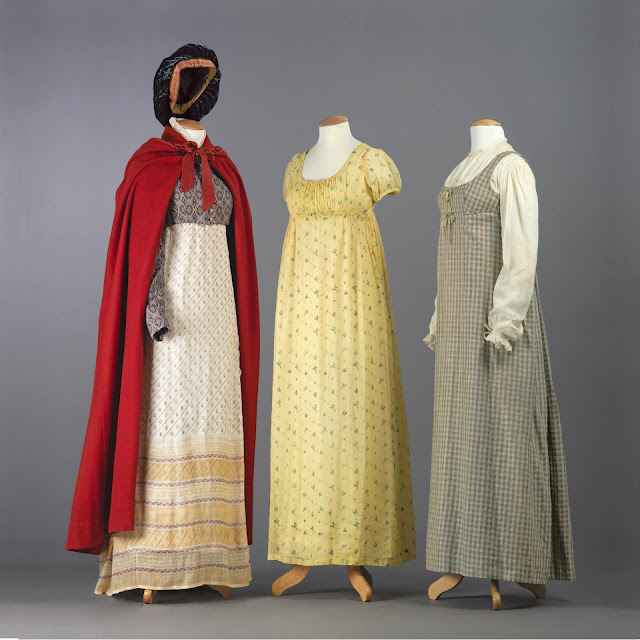JANE AUSTEN
donderdag 27 maart 2025
maandag 6 januari 2025
zondag 22 december 2024
zaterdag 21 december 2024
Houses and gardens of Kent and Jane Austen's visits.
Deel vijf. Wandelen door de tuinen en landgoederen van Kent, Engeland.
zaterdag 13 juli 2024
vrijdag 3 juni 2022
TAFT MUSEUM TO HONOR JANE AUSTEN’S FASHIONABLE LEGACY.
Jane Austen: Fashion & Sensibility will open to the public on June 11, featuring 40 costume pieces from film and television adaptations of Austen’s works. Pre-selected by Cosprop Ltd., a costume house based in London, these garments have never before been displayed by a North American venue. From the embellished bridal gown worn by Kate Winslet as Marianne Dashwood in Sense and Sensibility (1995) to the tailored breeches worn by Matthew Macfadyen as Mr. Darcy in Pride and Prejudice (2005), each article of clothing offers a fictionalized glimpse into the Georgian and Regency eras. The exhibition is to be presented in the Taft’s Fifth Third Gallery and historic house.
Read all: cincinnatimagazine/taft-museum-of-art-to-honor-jane-austens-fashionable-legacy
Coastal house where Jane Austen stayed goes on the market for £1.5million.
Sea Tree House in Lyme Regis, Dorset, is that dream come true – and it has a history that want-to-be writers will love.
That history: Jane Austen stayed in the Grade II listed property in 1804, during its time as a boarding house, and its thought the iconic views over Cobb may have inspired Persuasion.
Read all: metro.uk/coastal-house-where-jane-austen-stayed-goes-on-the-market-for-1-5million
zondag 22 mei 2022
Sleeping room.
Walk in Jane Austen’s footsteps and discover the rooms where P&P was revised and edited, and where #JaneAusten read the novel aloud to a neighbour on the very day she received her first copy.
zaterdag 23 april 2022
donderdag 28 oktober 2021
We're thrilled to begin work to restore the roof at Jane Austen's House!
We’re thrilled that the roof is to be restored after we were awarded a grant by Historic England and Historic Houses Foundation from the second round of the Heritage Stimulus Fund, part of the Government’s Culture Recovery Fund. The grant, coupled with support from Hampshire County Council and generous donations from our fans and supporters, has enabled us to begin the critical job of restoring and protecting Jane Austen’s precious home.
The roof was last refurbished in 1948 before the House opened to the public. Over 70 years on and over a million visitors later, major repairs are required to ensure the watertightness of the building and preserve the museum collection.
Jane Austen’s House is among 142 historic sites across England to receive grants worth £35 million through the government’s Culture Recovery Fund. Jane Austen’s House Director Lizzie Dunford said: “It is truly excellent news that Jane Austen’s House has been awarded this grant. Thanks to this support, alongside that of Hampshire County Council and the thousands of people across the globe who have donated to our fundraising campaign, we can now restore the roof which sheltered Austen as she created some of the greatest masterpieces of English Literature and protect her treasured belongings and inspirational home for future generations.” Read all: janeaustens/janes-roof-saved
zaterdag 9 oktober 2021
Leigh Family Papers.
These materials provide an unpublished window into her mother’s side of the family. It does not include Jane Austen material; most of her letters were burned by her sister after her death. The collection supplements other Leigh family material already in The Huntington’s possession.




